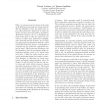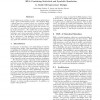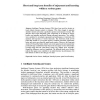239 search results - page 20 / 48 » Continuing motivation for game design |
CHI
2005
ACM
14 years 8 months ago
2005
ACM
Lighting assumes many aesthetic and communicative functions in game environments that affect attention, immersion, visibility, and emotions. Game environments are dynamic and high...
SIGECOM
2003
ACM
14 years 24 days ago
2003
ACM
Often, an outcome must be chosen on the basis of the preferences reported by a group of agents. The key difficulty is that the agents may report their preferences insincerely to m...
CVPR
2003
IEEE
14 years 26 days ago
2003
IEEE
We develop a framework for the image segmentation problem based on a new graph-theoretic formulation of clustering. The approach is motivated by the analogies between the intuitiv...
ISCA
2000
IEEE
13 years 12 months ago
2000
IEEE
As microprocessors continue to evolve, many optimizations reach a point of diminishing returns. We introduce HLS, a hybrid processor simulator which uses statistical models and sy...
AIED
2011
Springer
12 years 11 months ago
2011
Springer
Intelligent Tutoring Systems (ITSs) have been used for decades to teach students domain content or strategies. ITSs often struggle to maintain students’ interest and sustain a pr...




